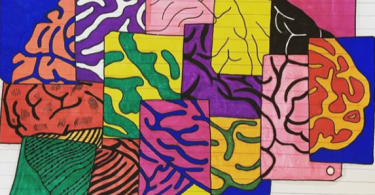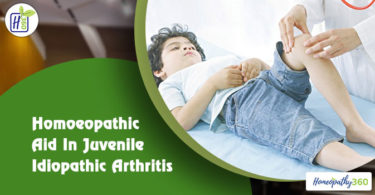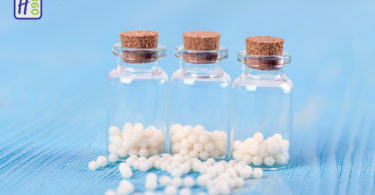Hypothyroidism – A few new thoughts of an old disease.
Abstract:
Hypothyroidism is divided in primary and secondary. Secondary hypothyroidism can be differentiated in pituitary and hypothalamic by the use of TRH test. Primary hypothyroidism may be clinical, where free T4 (FT4) is decreased and TSH is increased or subclinical where FT4 is normal and TSH is increased. In secondary hypothyroidism FT4 is decreased and TSH is normal or decreased. Primary hypothyroidism is most commonly caused by chronic autoimmune thyroiditis. Salt iodination, which is performed routinely in many countries, may increase the incidence of overt hypothyroidism. The incidence of clinical hypothyroidism is 0.5-1.9% in women and <1% in men and of subclinical 3-13.6% in women and 0.7-5.7% in men. It is important to differentiate between clinical and subclinical hypothyroidism as in clinical symptoms are serious, even coma may occur, while in subclinical symptoms are less and may even be absent. Subclinical hypothyroidism may be transformed to clinical and as recent research has shown it may have various consequences, such as hyperlipidemia and increased risk for the development of cardiovascular disease, even heart failure, somatic and neuromuscular symptoms, reproductive and other consequences. Hypothyroidism is treated by the administration of thyroxine and the prognosis is excellent.
Keywords: hypothyroidism, chronic autoimmune thyroiditis, postpartum thyroiditis, antithyroid antibodies, myxoedema coma, Homoeopathic Approach—Holistic approach.
Introduction
The term thyroid derived from Greek word thyreos means shield, and eidos means form.
The thyroid gland, located immediately below the larynx on each side of and anterior to the trachea, is one of the largest of the endocrine glands, normally weighing 15 to 20 grams in adults. The thyroid secretes two major hormones, thyroxine (T4) and triiodothyronine (T3).
Hypothyroidism is the most common disorder arising from hormone deficiency, which is readily diagnosed and managed but potentially fatal in severe cases if untreated. Clinical manifestations of hypothyroidism range from life threatening to no signs or symptoms. According to the time of onset it is divided in congenital and acquired, according to the level of endocrine dysfunction in primary and secondary and according to the severity in clinical or subclinical hypothyroidism. The distinction between subclinical and clinical hypothyroidism is of major significance as in clinical hypothyroidism symptoms are more severe even coma may occur, while in subclinical hypothyroidism symptoms are less serious and may even be absent. Hypothyroidism results from low levels of thyroid hormone with varied etiology and manifestations. Today, the diagnosis of hypothyroidism is easily made with simple blood tests and can be treated with exogenous thyroid hormone.
Etiology
Hypothyroidism is majorly divided into two categories, primary and secondary hypothyroidism. Hypothyroidism is termed primary when the thyroid gland itself is not able to produce adequate amounts of thyroid hormone. Secondary hypothyroidism is labeled when the thyroid gland itself is normal, and the pathology is related to the pituitary gland or hypothalamus.
The most prevalent etiology of primary hypothyroidism is an iodine deficiency in iodine-deficient geographic areas worldwide. Autoimmune thyroid diseases are the leading causes of hypothyroidism in the United States and the iodine-sufficient regions. Hashimoto thyroiditis is the most common etiology in the United States, and it has a strong association with lymphoma. Etiology can be influenced locally by iodine fortification and the emergence of new iodine-deficient areas.
Other common causes of hypothyroidism include:
• Drugs such as amiodarone, thalidomide, oral tyrosine kinase inhibitors, interferon, perchlorate, rifampicin, ethionamide, phenobarbital, phenytoin, carbamazepine, interleukin-2, and lithium.
• Thyroid radioactive iodine therapy
• Thyroid surgery
• Radiotherapy to head or neck area
• Central hypothyroidism from neoplastic, infiltrative, inflammatory, genetic or iatrogenic disorders of the pituitary or hypothalamus.
Postpartum thyroiditis affects nearly 10% of women and often presents 8-20 weeks after the delivery of the infant. The use of radioactive iodine to manage Grave disease usually results in permanent hypothyroidism in about 80-90% of the patients within 8-20 weeks after treatment. Radiation treatment to the head and neck area can also result in hypothyroidism. A relatively uncommon cause of primary hypothyroidism is subacute granulomatous thyroiditis. It commonly occurs in middle-aged women and is usually a self-limiting disease.
Secondary and tertiary hypothyroidism, also known as central hypothyroidism is caused by a defect in the hypothalamic-pituitary axis. Its causes include the following:
• Pituitary tumors
• Tumors compressing hypothalamus
• Sheehan’s syndrome
• TRH resistance
• TRH deficiency
• Radiation therapy to the brain
• Drugs such as dopamine, prednisone or opioids.
Epidemiology
The National Health and Nutrition Examination Survey study found the prevalence of overt hypothyroidism among adults in the United States (12 years of age and older) to be 0.3% and subclinical hypothyroidism 4.3%. Female gender and increasing age were associated with higher thyroid-stimulating hormone (TSH) and the prevalence of antithyroid antibodies.
Hypothyroidism is more prevalent in women with small stature at birth and low body mass index in childhood.
Pathophysiology
The most common cause of hypothyroidism is the inability of the thyroid gland to produce a sufficient amount of thyroid hormone; however, less commonly pituitary and hypothalamus may also result in thyroid dysfunction. The hypothalamus secretes thyrotropin-releasing hormone (TRH) that stimulates the pituitary gland to produce thyroid-stimulating hormone (TSH). Thyroid-stimulating hormone stimulates the thyroid gland to produce and secrete mainly T4 and smaller quantities of T3. The half-life of T4 is 7-10 days, and eventually, T4 is converted to T3 peripherally by 5′-deiodination. The decline in the production of T4 results in an increase in the secretion of TSH by the pituitary gland, causing hypertrophy and hyperplasia of the thyroid parenchyma, thereby leading to increased T3 production.
Clinical Features
It is important to maintain a high index of suspicion for hypothyroidism as the signs and symptoms can be mild and nonspecific and different symptoms may be present in different patients. Typical features such as cold intolerance, puffiness, decreased sweating and skin changes may not be present always.
Inquire about dry skin, voice changes, hair loss, constipation, fatigue, muscle cramps, sleep disturbances, menstrual cycle abnormalities, weight gain, and galactorrhea.
Symptoms of depression, anxiety, psychosis, cognitive impairments such as memory loss can be present. Rarely patients can present with ascites, rhabdomyolysis, and pericardial effusion.
Patients can also present with carpal tunnel syndrome, sleep apnea, hyponatremia, hypercholesterolemia, congestive heart failure, and prolonged QT interval.
Hashimoto disease is difficult to differentiate clinically; however, some features are specific for this condition such as:
• Fullness of throat
• Fatigue
• Painless thyroid enlargement
• Episodic neck pains and/or sore throat
Physical examination may be significant for the following:
• Enlarged thyroid gland
• Weight gain
• The slowness of speech and movements
• Dry skin
• Coarse and brittle hair
• Pallor and jaundice
• Dull facial expressions
• Macroglossia
• Bradycardia
• Pericardial effusion
• Prolonged ankle reflex relaxation time.
However, most of the patients have normal thyroid examination.
Investigation
Serum TSH level is used to screen for primary hypothyroidism in most patients. In overt hypothyroidism, TSH levels are elevated, and free T4 levels are low. In subclinical hypothyroidism, TSH levels are elevated, and free T4 levels are normal.
Secondary hypothyroidism is of pituitary or hypothalamic origin. TSH produced can be biologically inactive and can affect the levels of bioactive TSH, hence the diagnosis should be based on free T4 rather than TSH.
Labs should include evaluation for autoimmune thyroid diseases with levels of anti-thyroid antibodies such as the thyroid peroxidase antibodies.
Patients with subclinical hypothyroidism and thyroid peroxidase antibody positivity have a greater risk of developing overt hypothyroidism. The studies have shown that 50% of the patients will develop primary hypothyroidism in the course of 20 years.
Laboratory workup may reveal hyperlipidemia, elevated serum CK, elevated hepatic enzymes, and anemia. BUN, creatinine, and uric acid levels can also be elevated.
Screening for Hypothyroidism
While there are no universal guidelines on screening the public for thyroid disease, the American Thyroid Association recommends that screening should commence at the age of 35 and should continue every five years. Individuals at high risk for hypothyroidism include the following:
• Women over the age of 60
• Pregnancy
• Patients with a prior history of head and neck irradiation
• Patients with autoimmune disorders and/or type 1 diabetes
• Positive thyroid peroxidase antibodies
• Family history
Management
Hypothyroidism is mainly treated with levothyroxine medicine.
Diet for Hypothyroidism
Foods that contain certain nutrients can help maintain proper thyroid function, such as iodine, selenium, and zinc.
Other foods interfere with normal thyroid function, such as those containing goitergens and soy, avoiding these can improve symptoms.
Some foods and supplements can interfere with how well the body absorbs thyroid medicines, avoiding these foods can also help.
Homoeopathic Approach:—
The selection of homeopathic medicine for hypothyroidism is based on the theory of individualization and symptoms similarity by using holistic approach. By this way a state of complete health can be regained by removing all the sign and symptoms from which the patient is suffering. The aim of homeopathic medicine for hypothyroidism is not only to treat hypothyroidism but to address its underlying cause and individual susceptibility. As far as therapeutic medication is concerned, several remedies are available for hypothyroidism which can be selected on the basis of cause, location, sensation, modalities and extension of the complaints. Homeopathy offers good prognosis in cases of hypothyroidism.
Medicines like Calc. phos, Calc. carb, Lapis alb, Iodum, Thyroidinum, Kali carb, Spongia, Lycopus, Calc. iod etc are most commonly indicated in cases of hypothyroidism.
Spongia Tosta
Cerebral symptoms, marked anxiety, and suffocation, associated with palpitation and uneasiness in the region of the heart. Pain and a sense of stuffiness and fullness in the cardiac region, in the chest, with dyspnea, anxiety, fear of death, fear of the future, fear that something dreadful is going to happen. Glands gradually enlarge and become increasingly hard. Glands that have undergone inflammation and are increased in size become hard, or hypertrophy can occur. Hypertrophy of the thyroid, goiter, when the heart is affected and the eyes are protruding.
Lapis alb
Enlarged gland where there is a degree of elasticity rather than stony hardness (Dewey). Scrofulous affections, abscesses, and sores, enlargement and induration of glands, especially cervical, glandular tumors where no glands are usually found, goiter, cretinism. Lipoma, sarcoma, glandular and fibrous tumors, carcinoma as long as ulceration has not set in.
Iodum
Swelling of the exterior of the neck. Swelling of the glands of the neck, of the nape of the neck. Hard and large goiter. Constant sensation of constriction in the goiter. Unsupportable hoarseness and tingling in the throat, especially in morning.
Thyroidinum
“All progressed cases of myxedema show some mental aberration which tends towards dementia, usually with delusions, the latter taking the form of suspicion and persecution. Occasionally actual insanity is present in the form of mania and insanity”. Malaise better by lying in bed. Stooping causes palpitation. Rest in recumbent position better extreme breathlessness with lividity, felt as if dying. Myxedematous patients are always chilly. Loss of consciousness and general tonic muscular spasm for a few seconds. Tingling sensation in legs. Incomplete paraplegia. Swelling of face and legs. Feet repeatedly peel in large flakes, leaving a tender surface. Menses profuse, prolonged, more frequent.
Lycopus
Increased mental and physical activity in evening. Stupid, with lack of expression, during menstrual flow. Nausea from back of fauces, better by eructations that taste of tea and the drug, succeeded by persistent giddiness while sitting, and staggering while walking. Nausea and faintness. Circumscribed pain and compression in region of stomach. Indigestion with pain and distress in gastric region. Menses: intermit for ten or twelve days, last from half an hour to six hours.
Kali Carb
The characteristic weakness is seen with soft pulse, coldness, general depression, and very characteristic stitches, which may be felt in any part of the body, or in connection with any affection. pains are sharp and cutting; better by motion. Early morning aggravation. Sweat, backache, and weakness. Throbbing pains. Tendency to dropsy. Tubercular diathesis. Pains from within out, and of stinging character. Stinging pains in muscles and internal parts. Twitching of muscles. Pain in small spot on left side Hypothyroidism.
Calc. Iod.
In the treatment of scrofulous affections, especially enlarged glands, tonsils this remedy has gained marked beneficial results. Thyroid enlargements about time of puberty. Flabby children subject to colds. Secretions inclined to be profuse and yellow.
REFERENCE WORKS
1. Harrison’s Principles of Internal Medicine, 14th edition, McGraw-Hill.
2. Davidson’s Principles and Practise of Medicine, 17th edition, 1996, Churchill Livingstone.
3. New Manual of Homeopathic Materia Medica & Repertory, William Boericke, 2nd revised edition, 2001, B. Jain.





